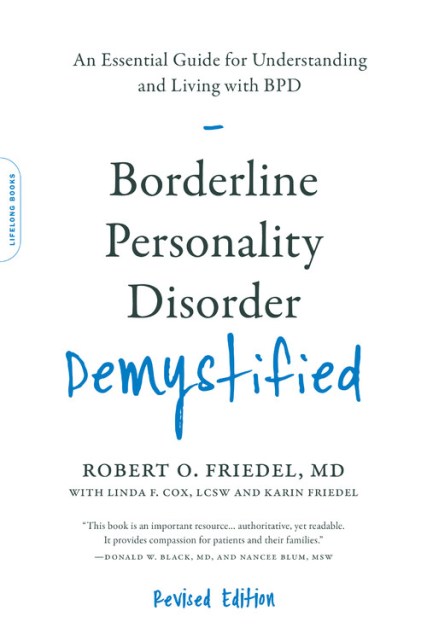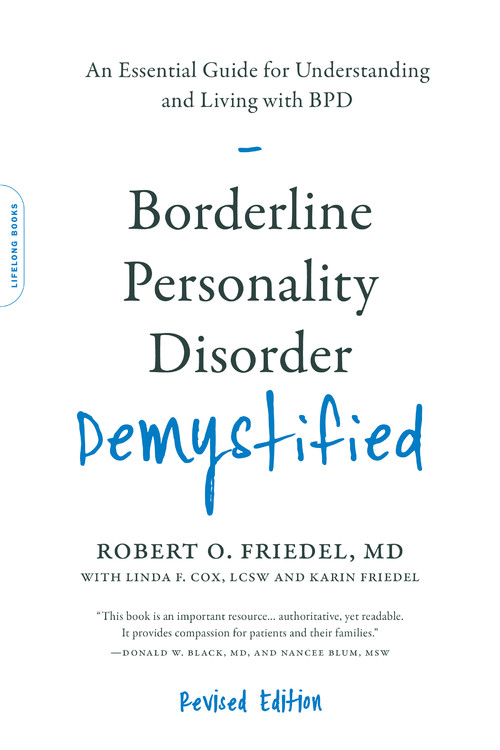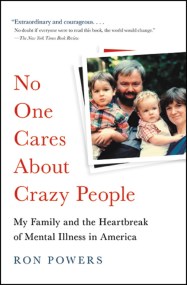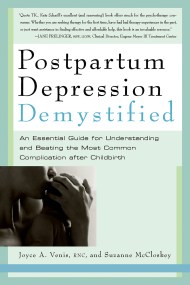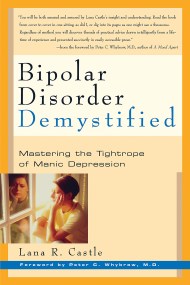Promotion
Use code MOM24 for 20% off site wide + free shipping over $45
Borderline Personality Disorder Demystified, Revised Edition
An Essential Guide for Understanding and Living with BPD
Contributors
With Linda F. Cox
With Karin Friedel
Formats and Prices
Price
$19.99Price
$25.99 CADFormat
Format:
- Trade Paperback (Revised) $19.99 $25.99 CAD
- ebook $11.99 $15.99 CAD
This item is a preorder. Your payment method will be charged immediately, and the product is expected to ship on or around February 20, 2018. This date is subject to change due to shipping delays beyond our control.
Also available from:
Millions of Americans suffer from borderline personality disorder (BPD), a psychiatric condition marked by extreme emotional instability, erratic and self-destructive behavior, and tumultuous relationships. Though it was once thought to be untreatable, today researchers and clinicians know that there is every reason for hope. Dr. Robert Friedel, a leading expert and pioneer in pharmacological treatment for BPD, combines his extensive knowledge and personal experience into this comprehensive guide. Borderline Personality Disorder Demystified shares:
- The latest findings on the course and causes of the disorder
- Up-to-date information on diagnosis
- An accessible overview of cutting-edge treatment options
The revised edition includes new forewords from Donald W. Black, MD, and Nancee S. Blum, MSW, and family educators James and Diane Hall.
Genre:
-
"This informative and compassionate book dispels myths and replaces misunderstanding with a wealth of knowledge so patients can get effective help. Clear, concise, and readable, Borderline Personality Disorder Demystified is helpful not only to those with BPD and their loved ones but also mental health professionals who want to know more about this disorder and what it is like to suffer from it."John Livesley, MD, PhD
-
"This book is a sensitively written, scientifically informed overview of borderline personality disorder. Both caring and authoritative, Dr. Friedel is a rare academician who combines a touching humanistic perspective on this challenging clinical syndrome with a deep and wide grasp of the rapidly growing relevant scientific literature."Kenneth S. Kendler, MD
-
"Wonderful! A doctor's doctor speaks clearly and compassionately about a disorder he's spent his career treating and studying. The stigma of borderline personality disorder is countered by hope and advocacy. Readers will be enlightened and inspired."John G. Gunderson, MD, Professor in Psychiatry at Harvard Medical School and Senior Advisor, Borderline Services at McLean Hospital
-
"Dr. Friedel's enthusiasm and life-long experience treating patients with BPD are evident on every page. This book is a well-balanced mixture of necessary information for patients and families and up-to-date overviews of relevant fields, from neurobiology to treatment."Christian Schmahl, MD, Professor and Director of the Department of Psychosomatic Medicine and Psychotherapy, Central Institute of Mental Health (Mannheim, Germany)
- On Sale
- Feb 20, 2018
- Page Count
- 320 pages
- Publisher
- Da Capo Lifelong Books
- ISBN-13
- 9780738220246
Newsletter Signup
By clicking ‘Sign Up,’ I acknowledge that I have read and agree to Hachette Book Group’s Privacy Policy and Terms of Use
